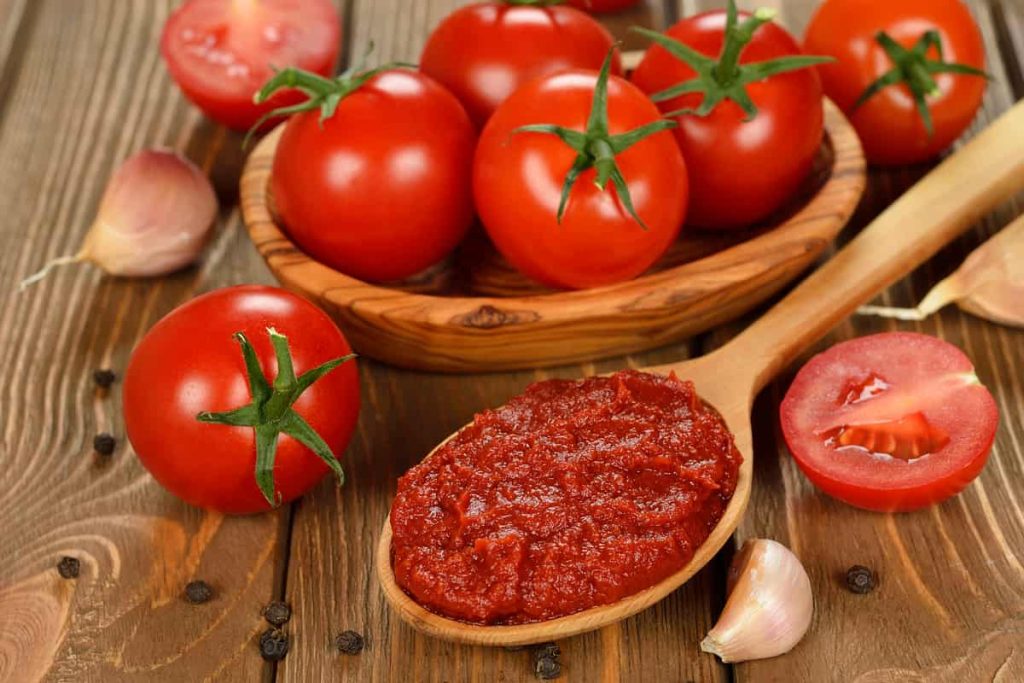After the opening of the tomato paste even for 3 or 4 days, the red color of the product might be changed to brown. In fact, the date of expiration depends on the situation of preservation.
In other words, When the lid of tomato paste is removed, the product is exposed to the oxygen in the surrounding air, which creates the circumstances necessary for it to deteriorate or mold.
What exactly is fungus? Can mold cause health problems?
Mold is a type of fungus that can grow into multicellular structures that have a fluffy appearance. Mold that develops on food is typically observable to the naked eye and, in most instances, alters the appearance of the food it is growing on.
When mold grows on food, it can cause the meal to become mushy and discolored, while the mold itself can have a fluffy, puffy, or speckled texture.
Mold’s natural color, which is typically green, white, black, or gray, can be altered by the production of spores in the mold.
Moldy food has an almost strange taste, which is somewhat comparable to the taste of wet soil, and it also emits an odor that is reminiscent of mushrooms.
Even though you can just see mold on the surface of the food, the spores may have already spread farther inside the product.
Mold can only develop in environments that are warm, damp, and rich in organic matter; hence, foods are typically the best candidates. Mold comes in countless varieties and can grow practically everywhere; there are thousands of different kinds.
It is possible to say that molds are nature’s answer to the problem of how to recycle various materials. Mold can grow on a variety of different things, including food, but it thrives best in dark, damp environments.

In most cases, they do not result in the development of hazardous diseases; nevertheless, when the immune system of the body is compromised, they can pose a significant threat.
They are able to proliferate and become more numerous as a result of an excessive amount of moisture, and the toxin they produce cannot be removed from food by boiling it. Because of this, throwing them away is the best option for both your safety and your health.
Do you think that freezing paste is the best course of action?
It is a common misconception that tomato paste should be stored in the freezer to keep it fresh for a longer period of time and to avoid mold growth; however, this is not the case.
Mold and pollution are problems that, in many instances, cannot be avoided since they are the result of secondary factors.
If you want to get rid of mold, one strategy is to buy a modest quantity of any kind of food. For instance, if you want to get rid of mold in tomato paste, buy smaller cans of tomato paste and make sure to put them in the refrigerator for a short while before opening them.
The quantity of contamination that is present on the can’s surface can be reduced by heating water to the boiling point.
Utilize oil as a preventative measure against the paste developing mold.
Spreading a thin layer of oil over the surface of the tomato paste will prevent it from becoming contaminated with mold. This will cut off the availability of oxygen, which will prevent mold from growing.

When utilizing the paste, first remove some of the oil layer with a dry spoon, and then scoop some of the paste from the area that does not contain oil. This can be done at any point during the process of opening the can.
A container that is appropriate for the paste.
After using the tomato paste, it is required to place a proper cover on the jar in order to prevent mushrooms from growing on the surface of the paste.
The container that is used to store the tomato paste should have a volume that is equivalent to the volume of the tomato paste.
After opening the primary container of tomato paste, you should transfer any leftover paste to smaller containers so that it does not become contaminated with other substances or grow mold.
This is especially important if you plan to make a large quantity of tomato paste and serve it to a large number of people. And finally, gate, divide, and keep up.
The use of an appropriate container is recommended as the most effective method for preventing mold growth in tomato paste, as indicated by the experiences of grandmothers.
There are containers that resemble soda bottles that have a small hole, and you can use these containers to preserve homemade pastes for an extended period of time. These containers can be used to store the paste.
Put some clean spoon to use. Use a spoon that is totally spotless and dry each time you require some of the paste. The mold in the paste is caused by a used spoon that is either damp or oily.
The mold and moisture content of the paste

When removing the paste, be sure to use a clean and dry spoon that is less contaminated. Moisture is one of the key factors in the creation of mold, therefore it is important to take this precaution.
It is fascinating to learn that in the past, a lot of ladies put a layer of oil on the surface of tomato paste so that it would last longer. This was done so that it wouldn’t go rancid. By utilizing this technique, both the supply of oxygen and the potential for mold growth are eliminated.
The growth of many bacteria and fungi only slows down at the temperature of the refrigerator, not stopping altogether; therefore, food can only be kept in the refrigerator for a certain amount of time at a time. One of the best ways to store food is to put it in the refrigerator, which is also one of the worst ways to store food.
In the refrigerator, the handmade paste should typically be kept for one to three months. Of course, the paste can be kept for a longer time if it is utilized properly and stored.
You should pay attention to the manufacture date and expiration date of the product, which are etched on the can (whether the paste has been opened or the canned paste is sealed), to determine the ideal storage period for tomato paste in cans. Canned pastes often have a longer shelf life than homemade pastes.
Homemade paste typically lasts between 7 and 10 days on the shelf when it is less cooked and slightly moist. because these pastes decay and mold more quickly when there is moisture present.
It is preferable to utilize the freezer rather than the refrigerator and employ tomato paste freezing techniques to store prepared pastes that haven’t been fully boiled. Tomato paste should often be frozen for a period of four to six months.











Your comment submitted.